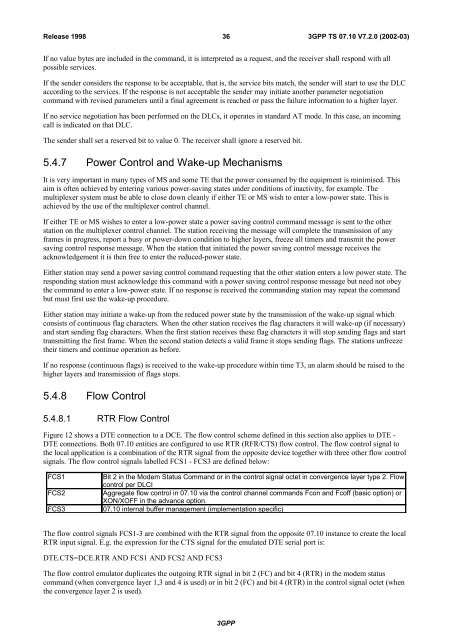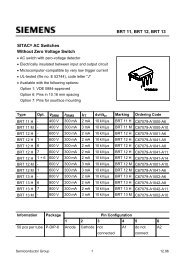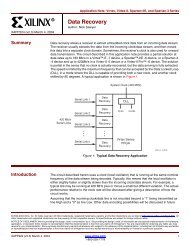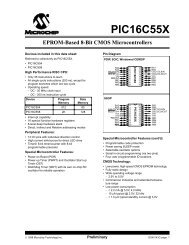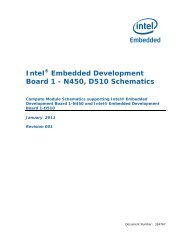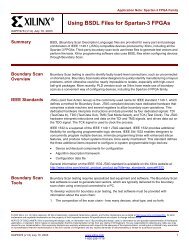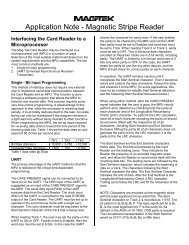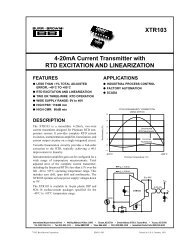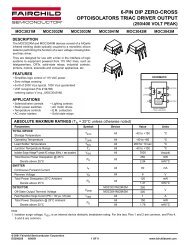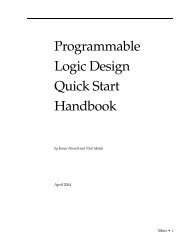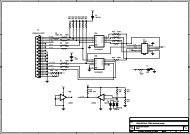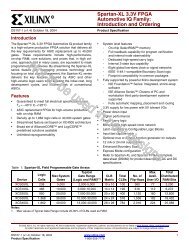3GPP TS
3GPP TS
3GPP TS
Create successful ePaper yourself
Turn your PDF publications into a flip-book with our unique Google optimized e-Paper software.
Release 199836<strong>3GPP</strong> <strong>TS</strong> 07.10 V7.2.0 (2002-03)If no value bytes are included in the command, it is interpreted as a request, and the receiver shall respond with allpossible services.If the sender considers the response to be acceptable, that is, the service bits match, the sender will start to use the DLCaccording to the services. If the response is not acceptable the sender may initiate another parameter negotiationcommand with revised parameters until a final agreement is reached or pass the failure information to a higher layer.If no service negotiation has been performed on the DLCs, it operates in standard AT mode. In this case, an incomingcall is indicated on that DLC.The sender shall set a reserved bit to value 0. The receiver shall ignore a reserved bit.5.4.7 Power Control and Wake-up MechanismsIt is very important in many types of MS and some TE that the power consumed by the equipment is minimised. Thisaim is often achieved by entering various power-saving states under conditions of inactivity, for example. Themultiplexer system must be able to close down cleanly if either TE or MS wish to enter a low-power state. This isachieved by the use of the multiplexer control channel.If either TE or MS wishes to enter a low-power state a power saving control command message is sent to the otherstation on the multiplexer control channel. The station receiving the message will complete the transmission of anyframes in progress, report a busy or power-down condition to higher layers, freeze all timers and transmit the powersaving control response message. When the station that initiated the power saving control message receives theacknowledgement it is then free to enter the reduced-power state.Either station may send a power saving control command requesting that the other station enters a low power state. Theresponding station must acknowledge this command with a power saving control response message but need not obeythe command to enter a low-power state. If no response is received the commanding station may repeat the commandbut must first use the wake-up procedure.Either station may initiate a wake-up from the reduced power state by the transmission of the wake-up signal whichconsists of continuous flag characters. When the other station receives the flag characters it will wake-up (if necessary)and start sending flag characters. When the first station receives these flag characters it will stop sending flags and starttransmitting the first frame. When the second station detects a valid frame it stops sending flags. The stations unfreezetheir timers and continue operation as before.If no response (continuous flags) is received to the wake-up procedure within time T3, an alarm should be raised to thehigher layers and transmission of flags stops.5.4.8 Flow Control5.4.8.1 RTR Flow ControlFigure 12 shows a DTE connection to a DCE. The flow control scheme defined in this section also applies to DTE -DTE connections. Both 07.10 entities are configured to use RTR (RFR/C<strong>TS</strong>) flow control. The flow control signal tothe local application is a combination of the RTR signal from the opposite device together with three other flow controlsignals. The flow control signals labelled FCS1 - FCS3 are defined below:FCS1FCS2FCS3Bit 2 in the Modem Status Command or in the control signal octet in convergence layer type 2. Flowcontrol per DLCIAggregate flow control in 07.10 via the control channel commands Fcon and Fcoff (basic option) orXON/XOFF in the advance option.07.10 internal buffer management (implementation specific)The flow control signals FCS1-3 are combined with the RTR signal from the opposite 07.10 instance to create the localRTR input signal. E.g. the expression for the C<strong>TS</strong> signal for the emulated DTE serial port is:DTE.C<strong>TS</strong>=DCE.RTR AND FCS1 AND FCS2 AND FCS3The flow control emulator duplicates the outgoing RTR signal in bit 2 (FC) and bit 4 (RTR) in the modem statuscommand (when convergence layer 1,3 and 4 is used) or in bit 2 (FC) and bit 4 (RTR) in the control signal octet (whenthe convergence layer 2 is used).<strong>3GPP</strong>


